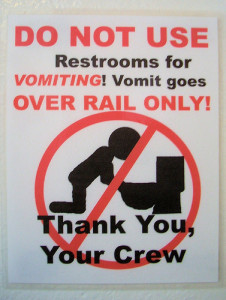The British Poultry Council (BPC) told The Grocer that media reports that supermarkets are knowingly selling chickens contaminated with Campylobacter may mislead consumers, and that “cooking it properly and observing good kitchen hygiene” will take care of the problem.
 It’s easy to blame consumers. What are producers doing to reduce risk?
It’s easy to blame consumers. What are producers doing to reduce risk?
An article in today’s (19 November) The Times cited BPC data that showed 24% of a randomly tested sample of 5,000 batches of chicken had tested positive for the highest levels of campylobacter contamination.
The results were similar to those revealed in August in the first batch of quarterly results from a 12-month survey currently being undertaken by the FSA on the prevalence and levels of campylobacter contamination on fresh whole chickens and their packaging. The FSA survey showed 16% of birds at the highest level of contamination of more than 1000 colony forming units per gram, and 26% at between 100 and 1000 cfu/g.
BPC CEO Andrew Large said The Times article was based on a small sample of testing, designed to assist members of the Joint Working Group on Campylobacter in their operations.
“As the data is neither comprehensive nor statistically robust, it will not be useful for consumers and risks being misleading,” he warned, adding: “Consumers have a key role to play as good kitchen hygiene will remain a cornerstone of preventing foodborne illness.”
A spokeswoman for the British Retail Consortium said, “As long as campylobacter is present in the food chain, and we don’t yet have the solution for that despite our best efforts. We need to maintain the very strong message that all raw chicken should be handled with appropriate care and releasing incomplete data could dilute that message to consumers and lead to confusion.”
The FSA will next week issue the second set of quarterly results of its campylobacter survey, when it will also name-and-shame” retailers with the worst record for campylobacter-contaminated poultry.
Spin away.
(And this is from the last time I saw the Stones, in 1981; didn’t need to go again in Brisbane the other night.)









.jpg) doubt she would know to wash fresh produce. More and more often the attitude is becoming, if it looks clean, let’s eat it.”
doubt she would know to wash fresh produce. More and more often the attitude is becoming, if it looks clean, let’s eat it.” Surveys still suck.
Surveys still suck. contamination – leeks are grown in soil and whatever microorganisms are within the white bits are going to drip on the counter and elsewhere.
contamination – leeks are grown in soil and whatever microorganisms are within the white bits are going to drip on the counter and elsewhere. • use different chopping boards, knives and utensils for raw and ready-to-eat foods, or wash thoroughly in between preparing different foods; and,
• use different chopping boards, knives and utensils for raw and ready-to-eat foods, or wash thoroughly in between preparing different foods; and,